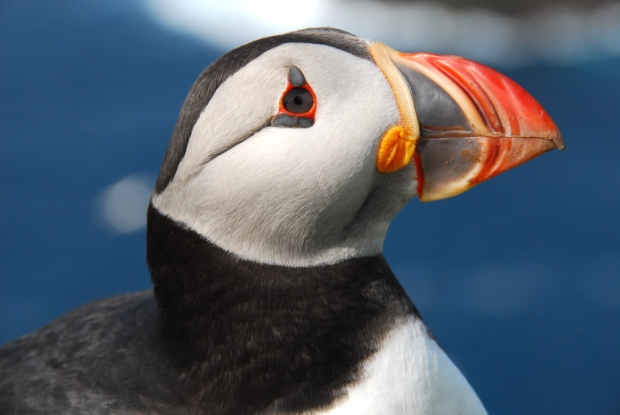
Examinations of deceased puffins have uncovered small plastic pellets.
Known as 'nurdles', the pellets are the raw materials used to make plastic items and are a growing cause of pollution in the world's oceans.
Accidental spills mean billions of these pellets find their way into the marine environment every year, with Scotland's seas no exception.
Now conservationists have raised concern for the country's seabirds after routine examinations of puffin corpses collected in the Firth of Forth revealed many of the birds had swallowed nurdles along with their usual prey.Experts are still unsure of the full impact of nurdles on wildlife, but it is believed they may attract and become coated with other toxic pollutants in the sea.
This could increase the dangers to marine animals and birds mistaking the lentil-sized fragments for food.Scientists dissecting dead birds collected on the Isle of May were initially puzzled when they discovered various coloured pellets alongside their more usual diet of sandeels.
It was environmentalists from the charity Fidra, who run the Great Nurdle Hunt campaign against plastic pollution, who explained what they were seeing.
Mark Newell, from the Centre for Ecology and Hydrology (CEH), said: "We regularly collect puffins found dead on the island to help us monitor the health of the population.
"As part of this research we look at what they have been eating.
"At first we didn't know what the strange pieces of plastics were, but we found them in a number of the puffins' stomachs.
"They were nurdles," he added.
The Isle of May is a national nature reserve and internationally important site for puffins. Tens of thousands of the birds are due to flock there in the next few days to breed after spending the winter at sea.
Tom Brock, chief executive of the Scottish Seabird Centre, said: "To hear of puffins ingesting nurdles in the Firth of Forth is very alarming news.
"Not only can nurdles get trapped in their stomach but the toxic chemicals on the surface of the plastic may have terrible repercussions. It is vital that we all do what we can to resolve this issue."
Iain Rennick, from government agency Scottish Natural Heritage, said: "The Isle of May attracts around 250,000 seabirds each year, making it one of Scotland's largest breeding seabird colonies. It also has one of the UK's largest breeding populations of puffins.
"While we don't fully understand all the impacts they have, nurdles and other marine litter are a real threat to all our marine wildlife.
"It's important to do all we can to keep our seas clean and litter-free."
Cathy Sexton, of the Great Nurdle Hunt, said: "This discovery on the Forth's national nature reserves is a disturbing and serious reminder of the effects nurdles are having on wildlife and the pressing need for industry to act to prevent more seabirds from being affected."

our seas clean and litter free is to stop using plastic and boycott plastic items that we can. Nothing else will work except to get rid of the problem which is the manufacture of most plastic items like bottled water, plastic shopping bags, etc. We'll never get rid of all of it, but we can sure put a dent in the root cause of the litter problem.